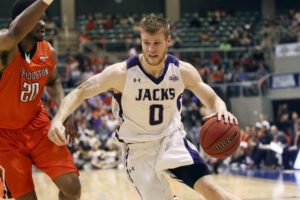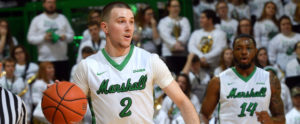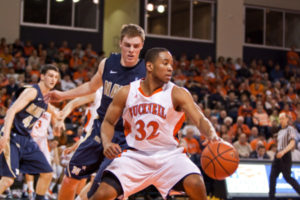Loyola-Chicago

Loyola-Chicago has been the most promising cinderella all season long. A mostly upperclassmen-laden squad, the Ramblers enter the Big Dance with few flaws, undeniable balance, and house money. The last time Loyola-Chicago earned a tournament bid was 1985, a year in which they made the Sweet Sixteen. Will history repeat itself?
This year’s group is a beautiful team to watch. There are no below average passer, even their freshman center dishes dimes. They have tremendous balance in both scoring and ball handling, often looking to drive and kick for open perimeter threes, which they shoot 40% as a team. This team oozes with talent. They have their league’s defensive player of the year, player of the year, freshman of the year, and sixth man of the year. Aundre Jackson, the sixth man, is one of the more fluid players you’ll see in the tournament. He is an agile, cerebral forward who shoots at a high percentage, passes like a guard, has great fundamentals to draw defenders off their feet, and is a strong finisher inside.
Add in some other lights-out shooters like Clayton Custer, Dante Ingram, and Lukas Williamson and you’ve got yourself a pretty damn good team. They rank in the top 25 in both offensive and defensive efficiency. They play smart, rarely fouling opponents despite employing a smothering, relentless defense that switches from man to zone liberally. On the offensive side of the ball the Ramblers control the pace without compromising an aggressive attack. They’ll swing the ball around to 4 or 5 players each possession and keep defenses on their heels with their crisp cross-court passing and shifty driving ability.
The Ramblers’ six-point win at Florida in early December was no fluke. They have the blueprint of a team that could make it into the second weekend, with enough depth and consistency to make up for a couple minor flaws such as being short on shot-blockers.
These guys are in no rush to pack up and go home, so get comfortable with them sticking around.
Davidson

Post-season aspirations did not look promising for the Wildcats after starting the season 10-9. Fortunately for them, they went 10-2 in their final 12 games, capping off the run with an A-10 championship game victory over tournament-bound Rhode Island. This is a fundamentally sound squad led by Bob McKillop, the first longest tenured coach in the country, who has been with Davidson for 29 seasons. The same guy who helped Steph Curry climb to basketball immortality, McKillop has a nose for talent and a knack for cultivating tight-knit teams that trust their teammates.
This is a cerebral squad that plays within themselves and brings a lot of talent to the table. They space the floor well, driven by an inside-out attack, and is top to bottom one of the best perimeter shooting teams in the country. Davidson is Top 5 in offensive efficiency, putting up close to 80 points per game while controlling the pace and never playing hurried. They are patient, always looking to make the extra pass and take the right shot. They are also one of the best free throw shooting teams and can pull their weight in rebounding against the more physical teams with size.
For these reasons, the Wildcats are rarely out of a game, and play quite well in tight match-ups. In other words, they are built for tournament play. Freshman guard Kellan Grady is Davidson’s best scorer since Steph Curry. He has an NBA body and skillset and there is a variety to his game that makes him special. Grady can slice inside, pull up, and finish at the rim, but, like Steph, he has a quick release and can shoot it from just about any distance from the basketball. He will frequently drill shots from several feet behind the three-point line with the same ease as a free-throw.
But the talent doesn’t stop with Kellan. Although they only play seven guys, all of them are good players who can compete in important moments. Crafty guard Jon Axel Gudmundsson, a 6’4” sophomore from Iceland, does a bit of everything for this squad, averaging 13 points, 6 rebounds, and 5 assists. Senior fowards Oskar Michelsen and Peyton Aldridge make Davidson a dual inside-outside threat and give them a fighting chance against teams with a lot of talent down low. Aldridge, the co-A-10 Player of the Year, can stretch the floor with his quickness, passing, and outside shooting. He is always hustling on transition opportunities and on rarely allows his opponent to get behind him. His strength compliments his ability, making him hard to guard when he’s driving to the basket, and his footwork makes him a great mid-range threat, giving him a knack for backing opponents down and shooting 15-footers over them.
There is a lot to like about Davidson between their star power, balance, and coaching. Coming in to the tournament hot with a lot of momentum and belief in themselves, these guys will be a tough out.
New Mexico State

The Aggies have boasted 28 wins in back-to-back years and have great Cinderella potential. They have the nation’s 14th best defense, ranking 4th in rebounds per game and 10th in points allowed. They also come in to the tourney hot, winners of 17 of their last 19 games.
The engine of this team is Jemerrio Jones. The WAC player of the year plays anywhere and everywhere on the court, boasting great athleticism and court awareness. He can penetrate the defense at will and has the vision to pass and shoot without allowing the opponent to read his eyes know where he/the ball is going. On top of his offensive prowess, Jones is an elite defender who can stifle opponents and is a force down low, collecting 13 rebounds per game. Look for his teammate Zach Lofton to compliment Jones in star power, as Lofton averages 20 points per game, shoots 40% from three, and has a knack for putting up huge performances when it matters most.
This is a team that has been Davidson, Miami, and New Mexico twice. They know how to win and aren’t afraid of anyone. Clemson will have a tough time finding a rhythm against them in the first round.
Buffalo

March Madness is becoming old hat for Buffalo, winners of the MAC conference three out of the past four years. This year’s team features four players averaging 14 points or more, including star guard CJ Massinburg, who makes a habit of getting hot down the final stretches of games, veteran forward Nick Perkins, a reliable post presence, shifty guard Wes Clark, who averages 6 assists per game, and 6’7” guard Jeremy Harris, who is a threat from deep and sturdy on the boards.
The Bulls have been consistent all year, with competitive games against the likes of Cincinnati and Syracuse, and come in hot, winners of 19 of their last 22, with the past 6 victories all coming by double digits. This is an exciting team that will be a tough out, thanks in large part to them being locked in defensively and hot from three. They are without much debate the strongest 13-seed in this year’s bracket.
South Dakota State

Akin to the Buffalo Bulls, The South Dakota State Jackrabbits have dominated their conference in the past three seasons. This team, like its others, poses a legitimate challenge to any tourney team this season because of its depth, deliberate pacing, and abundance of talent.
As far as talent goes, it all starts with Mike Daum, the best player-you-may-never-have-heard-of in college basketball. Daum is a 6’9” swiss army knife, who poses a near impossible match-up for any opponent, presenting a triple threat. If you guard him small, he puts you on the block and finishes at the hoop. If you guard him big, he’ll take you off the bounce with a mid-range (or long range) jumper with a high enough release that is virtually unblockable. If you double-team him, he’ll make the right pass to one of many talanted teammates. Daum is one of the sharpest shooters in the game, boasting 24 points a game and shootiing 86% from the free-throw line and 42% from three. He puts up video-game like numbers all the time, scoring 30 in 12 games already this season. Because of his size he’s great in the pick and roll game, a force down low with 10 rebounds per game, and can’t be out-physicalled when he’s on defense.
And after Daum, we’re nowhere near done with the talent on this team. David Jekins Jr., a super-freshman who played an extra year in high-school, is a star in the making. When he’s hot, he’s instant offense, with a lightning, smooth release and a great step-back move that can create space. And then there’s Reed Tellinghuisen, 6’7” senior guard who brings a similar game as Daum. Tellinghuisen can do a bit of everything on the floor, whether it’s drawing the offensive foul, making the extra pass, hitting key threes, or boxing out on rebounds.
This team is 27th in the country in three-point shooting, averaging 40% as a team. They can win a game in any style, whether it’s a scrappy slugfest or a fast-paced shootout. They also haven’t lost since mid-January, and don’t intend to anytime soon.
Stephen F. Austin

Stephen F. Austin plays a similar style to West Virginia, with bruising, in-your-face press defense that leads the nation in defensive turnover rate. Not only do they force more steals than any other team, they also have one of the best offenses, putting up over 81 points per game. This is a deep, experienced team that has three veteran seniors, a leading scorer who comes off the bench, and “nine starters”, as coach Kyle Keller would put it. They have four players who shoot over 40% from three and an entire roster of turnover magicians who are athletic, can make something out of nothing, see the court well, and shoot free-throws at an incredible rate.
Leading scorer Shannon Bogues, who, as previously mentioned, isn’t even a starter, puts his fingerprints on every game, averaging 24 points, 2.4 rebounds, and 1.4 steals. He’s a 50% field-goal shooter with an explosive first step and a killer crossover. Players Kevon Harris, Ty Holyfield, Ivan Canete, Ty Charles, and Leon GIlmore III all present athletic challenges on offense, and on the other side of the ball this team finds ways to make the opponent’s offense uncomfortable, making them go a little too fast or out of control for comfort and leading easy transition buckets off turnovers.
The Lumberjacks’ offense is not system-dependent, meaning they can make something out of number with broken plays and respond quickly with defensive adjustments. When they play teams like themselves, who look to make their opponents uncomfortable, Stephen F. Austin actually matches up well. Texas Tech, their first round opponent, happens to be just this kind of team.
Marshall

Marshall has a competitive résumé, narrowly losing to 1-seed Xavier earlier this season and beating four strong opponents in the last four games, including mid-major forces Western Kentucky and Middle Tennessee State. Coached by Dan D’antoni (Mike D’antoni’s brother), the Thundering Herd are a dominant offense, finishing 12th in the nation in scoring (84.3 PPG) and 11th in assists.
Jon Elmore is one of the most underrated point guards in the country, with an innate ability to create for himself, force steals, finish at the basket, hit from long range and at the free throw line, and find his open teammates. Forward Aidin Penava poses a great inside threat as well, with quick feet and an ability to get good positioning. Penava never lets his guy get in front of him and has a talent for drawing clutch charges.
Marshall is an offensive juggernaut but does not pose the same threats defensively, aside from the aforementioned Elmore and Penava. Just as easily as they could win a tournament game in a shoot-out, they could also lose in one.
Lipscomb

Lipscomb secured a bid to the 2018 tournament by crushing Florida Gulf Coast, aka Dunk City, a perennial mid-major squad that has had a lot of post-season success this decade. That should give you an idea of what this 15-seed is capable of. The Bisons have a lot of star-power between Garrison Mathews and Rob Marberry. Matthews is a great scorer, putting up 22 points per game. He is crafty in transition, plays downhill, and while he’s lights out from three he doesn’t rely on it to score. He led his league in scoring this season and has one of the best shot-fakes in the nations. He can uses his length to finish over big men and is a solid defensive presence for the same reason. When he’s Garrison is hot, he’s cold-blooded. Look for this guy to take over a tournament game. He comes from a football background, with lots of winning in the family. You can see it in his playing style, as he attacks with unstoppable force.
Lipscomb plays at one of the fastest tempos in all of college basketball, rating fifth in adjusted tempo. They have an inside-out philosophy, with much of the offense runnning through big man Rob Marberry. The team philosophy is to take the first good shot available, and they quite excel at finding open shots easily given their pace of play. As part of the package, they commit a lot of turnovers, which could be their achilles heal as they match up against supreme competition. Lipscomb enters its first ever NCAA tournament winners of 14 of their last 15.
Bucknell

Bucknell enters the field of 64 for its second consecutive season. Led by a trio of seniors – Zach Thomas, Nana Foulland, and Stephen Brown, the Bison play with poised experience and are coming in hot. After starting the season 7-8, Bucknell finishes the season winners of 18 of their last 19 games.
Senior forwards Zach Thomas and Nana Foulland lead the team in scoring, putting up 20.3 PPG and 15.4 points per game respectively, collectively average 16 rebounds per game. Guard Stephen Brown adds lethal outside shooting and a nose for the open man. If the Bison pull off an upset it will be because of these three seniors, who combined for 53 points earlier this season in a game against defending-champion North Carolina.